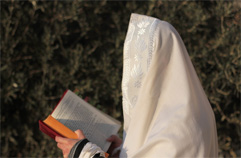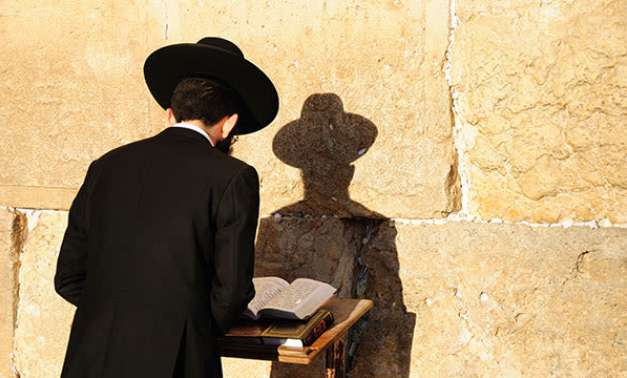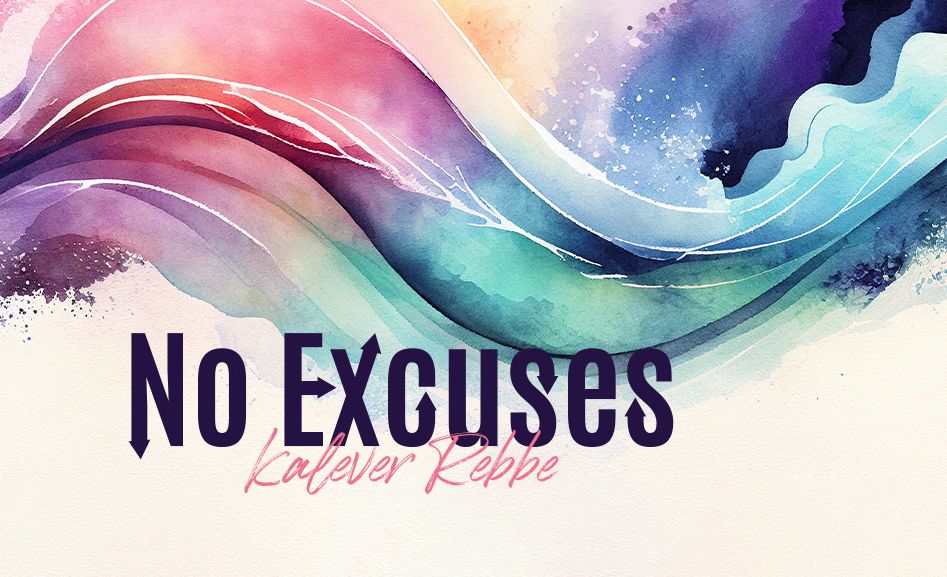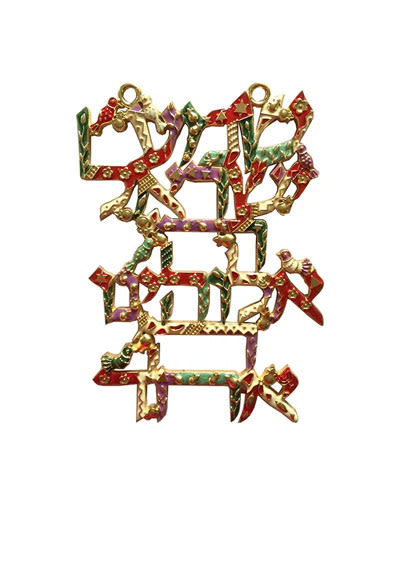
Amida Prayer Ploys
We see people in the prayer services enjoying the experience and sometimes we feel left out. Here are a few simple ploys to enhance your prayer experience...

Many of us are stuck. We see people in the prayer services enjoying the experience and sometimes we feel left out. I remember in my early days of praying, (when I didn’t know anything) feeling that I wanted to connect to Hashem. This feeling of not really understanding the prayer service led me to finding my own ways on how to connect through prayer. Today with the teachings of Rabbi Shalom Arush being spread all over the world, more and more people are trying to lengthen their prayers and feel more spiritually connected. The following are personal tips that I use to better unite with the Almighty during the first blessing of the daily standing prayer.
To begin when we pray the standing prayer, the first thing we do is take three steps back. As Dr. Zev Ballen has mentioned in his classes, the inner meaning of this is to completely let go. We ‘stand back’ so to say from our current situation (work, bills, problems) we let go. We put the difficulties on the shelf and prepare our thoughts to leave our current situation momentarily. After that we take three steps forward, signifying that we have entered into a new realm, call it a private meeting with God. This relaxes the brain and allows for a better “signal” during your prayer.
A well-known concept in Breslever thought is to pray before everything. We say thank you for all of our blessings even the seemingly mundane. What isn’t so well known is that we also pray to pray. For example, there are people who practice personal prayer where they take 60 minutes to thank God about their day and also assess where they can improve in their lives (see In Forest Fields). Well during the first few minutes of their session they will pray for God to guide them. They will ask God to help them speak  since it can be a little awkward talking to God if one isn’t used to it. But even experienced people who know how to pray with great strength daily ask Hashem for help in fully expressing themselves in their moments of prayer.
since it can be a little awkward talking to God if one isn’t used to it. But even experienced people who know how to pray with great strength daily ask Hashem for help in fully expressing themselves in their moments of prayer.
At the same time, when we begin the standing prayer, the first verse that comes out of our mouths is “God please open up my lips and mouth so that I will say your praises.” So in practice, a person can meditate on that phrase beforehand for a few seconds, don’t worry about finishing your prayers fast. In fact, Rav Shalom tells his students to try to make a thirty minute standing prayer session once a day! Take your time in your prayer and don’t worry if you take longer than the rest of the group. Make it a goal to steadily increase your prayers for a higher connection with God. When we silently repeat over and over that verse requesting help from God to pray, we can get to a level of awareness whereby we realize that we are powerless without God. Try meditating on this, we acknowledge to God that we need his help in focusing and saying the right words with the best intention. This type of spiritual prep work arouses feelings of humility which are ever so conducive for proper prayer.
In the first blessing that we say, we acknowledge the patriarchs Abraham, Issac, and Jacob for their indispensable role in bringing about the religion of Judaism. As we say each of their names, it’s a great tool to try focusing on a specific attribute, or experience that one of them had. For example, in my personal life if I am having a difficult period I can connect to the name Jacob. I can repeat that name over and over and recall the many tribulations he encountered(Esav, Laban etc.) yet overcame them with simple and complete faith also known as Emuna. When I was single, and wanted to greatly find my wife. I would meditate on Jacob’s name and recall in my mind what it must have been like for Jacob to see Rachel for the first time I simultaneously reinforced my belief that I too would one day have a similar experience.
TASK: Try to think of ways that this can be applied in your own prayer service. What patriarch can you connect to?
Dr. Zev Ballen taught many years ago a special class about praying. He mentioned something that has stayed with me and many others to this very day. He explained how to connect more to ending of the first blessing in the standing prayer. If you notice it says “King! Helper! Savior! And Shield!” Rav Ballen emphasized that someone praying should reflect on each of these words, repeating each one slowly and with concentration over and over again.
Hint: You could be going through a problem that is troubling you, but by adapting this tool into your prayers you can literally find yourself in great attachment to God. Just keep repeating slowly each of those words and your problems will become much more manageable.
When you say “King,” have the intention:
YOU CAN DO ANYTHING GOD! YOU HAVE ALL THE CONTROL, (not my boss at work!)
When you say “Helper,” one can intend:
GOD IS HELPING ME GROW IN FAITH (sure my situation looks helpless but HASHEM will comfort me!)
When we mention “Savior,” we can focus:
HASHEM CAN CHANGE ANY PROBLEM AROUND (I’ve been in hard times before, I know I’ll get through this.)
When we announce “Shield,” we assert our belief that:
HASHEM CAN PROTECT US FROM ANYTHING.
(Imagine Hashem literally controlling the world and solving your problem.)
Tips To Review and Apply:
1. When we go to pray, we take 3 steps back leaving the problems momentarily.
2. Take 3 steps forward, be completely with Hashem, put the phone on silent, express yourself.
3. Don’t rush, read the prayers slowly and concentrate, aim for 15 minutes.
4. Focus on the beginning request asking Hashem for help to pray, humble yourself before Him.
5. Connect your own personal life to a specific patriarch’s life experience.
Focus and repeat the ending words of the first blessing, meditate on their personal significance.











Tell us what you think!
Thank you for your comment!
It will be published after approval by the Editor.